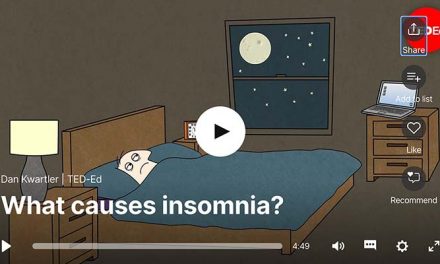Table of Contents
The ability to lucid dream is sought after by those who wish to experience their dream states consciously. Beyond the recreational appeal of interacting with a dream environment that offers striking realism, lucid dreams have been lauded for benefits such as reduced anxiety, improved motor skills, problem-solving, and increased creativity.
Everyone dreams, regardless of whether or not they remember it upon waking – but when it comes to lucid dreaming, roughly 55% of adults have experienced at least one lucid dream in their lifetimes, and only 23% experience them at least once a month or more. Lucid dreaming poses an exciting new frontier for sleep researchers and avid dreamers, who have discovered and popularized techniques to induce lucid dreaming.
But what exactly is lucid dreaming? How to lucid dream successfully? What techniques are recommended by experts? If these questions pique your interest, continue reading to find out how to lucid dream tonight.
What is lucid dreaming?
Lucid dreaming is a phenomenon where people are consciously aware of the fact that they are dreaming while they are asleep. It is a unique state of metacognition or a distinct awareness of one’s cognitive processes.
Like non-lucid dreams, lucid dreaming typically happens during the rapid eye movement (REM) stage of sleep. In REM sleep, your heart rate, brain activity, and eye movement all increase. However, your consciousness state differs from regular dreaming and being awake. Lucid dreaming is often understood as a hybrid sleep-wake state due to elevated cortical activity levels compared to being awake, even though the prefrontal cortex typically rests during REM sleep.
Your prefrontal cortex is responsible for logical thinking and executive cognitive function, and its diminished state during sleep has been attributed to the lack of self-awareness during regular dreaming. In contrast, the increased cortical activity during REM sleep during lucid dreaming has been scientifically evaluated through observational methods like electroencephalograms (EEGs) and electrooculograms (EOGs) to track brain activity and eye movement.
Misconceptions about lucid dreams
Despite the popularity of lucid dreaming in the scientific community and the general population, there is still a lack of understanding of the phenomenon. Here are some of the most popular assumptions and misconceptions about lucid dreams:
-
You have to be able to control your dreams to successfully lucid dream.
Lucid dreaming is often associated with the ability to control the elements of the environment within one’s dream, but this is not a universal feature of lucid dreams. It is indeed possible to control your actions within a lucid dream. Still, it is not the sole, distinctive feature behind a lucid dream – don’t be discouraged if you feel like you’ve experienced awareness during your dream but were unable to control the environment because you successfully lucid dreamed by definition! Uncontrolled lucid dreams are more common than controlled ones.
-
Once you lucid dream once, you can easily continue to do so.
Lucid dreaming on demand takes some practice and time, and sometimes it can appear naturally. Don’t be discouraged if you have trouble lucid dreaming at will, as sometimes, even those who fall in the 23% of people who regularly lucid dream have difficulty doing so.
-
Sleep paralysis is required to lucid dream.
A frequent concern for people interested in trying out lucid dreaming is sleep paralysis. Sleep paralysis is when your body struggles to move smoothly between sleep phases and experiences a mismatch with your mind. Those who experience sleep paralysis may have trouble moving or speaking when they feel awake since their body has not caught up yet. It can be frightening but primarily harmless and typically happens in isolated episodes. Some of the methods used to induce lucid dreaming interrupt the sleep cycle, which may increase the chance of experiencing sleep paralysis. However, this does not mean the two are always linked.
What are the risks of lucid dreaming?
While there are many proposed benefits of lucid dreaming, some experts are wary of the consequences that can follow consistent attempts at lucid dreaming induction. These concerns primarily revolve around sleep disruption and mental health.
Some techniques, including those listed below, involve deliberately disrupting your sleep. The unique hybrid sleep-wake state of lucid dreaming can potentially interfere with normal cognitive processes during REM sleep. Beyond this consideration, those attempting to induce lucid dreaming may not only be disrupting their sleep but not sleeping enough. Sleep deprivation carries its own physical and mental health implications that are important to consider when engaging in long-term lucid dreaming induction habits.
The state of research on the relationship between sleep fragmentation and lucid dreaming is inconclusive but developing – one study contends that it is not the lucid dream that requires poor sleep to occur but the associated induction techniques that can carry unintended consequences. While current studies on poor sleep as a consequence of lucid dreaming may be inconclusive, it is something to consider before incorporating lucid dream induction into your everyday life.
Despite occurring in a dream state, the experiences of lucid dreams can influence your mental health. Depending on the dream’s content and your mental health in waking life, this influence can sway negatively or positively. Experts have cautioned those with psychosis against partaking in lucid dreaming as it may provide internal reality with the appearance of an external reality. However, current research shows that psychological strengthening can occur in non-psychotic populations. Further research is needed to fully understand the relationship between mental health, physical health, and lucid dreaming.
FAQ
People are curious about lucid dreaming and its risks and benefits. Here are the answers to some of the most frequently asked questions about lucid dreaming.
-
Can lucid dreaming help with nightmares?
One of the appeals behind lucid dreaming is its potential to stave off nightmares. Lucid dreaming therapy may efficiently treat nightmares even if lucid dreams are not successfully achieved. Induction exercises promote critical thinking about the content of dreams and can provide benefits for nightmare treatment even in the absence of lucid dreaming. However, further research and replicative studies are needed to solidify the claim that lucid dreaming can treat nightmares.
-
What does lucid dreaming look like?
Lucid dreaming does not have a one-size-fits-all manifestation, and they are largely unique to the individual. Lucid dreams can look like any typical non-lucid dream might appear, with the notable addition of the awareness that you are dreaming. People will have different experiences, so try not to fret about comparing your lucid dreams with others.
-
Will lucid dreaming make you tired?
It is possible for lucid dreaming to disrupt your normal sleep patterns and lead to less sleep during the night, especially when utilizing certain induction techniques. The amount of sleep, as well as the quality, may diminish when attempting to lucid dream. It’s important to monitor how much sleep you get and ensure that you still obtain an adequate amount daily to prevent tiredness.
Considerations for safe lucid dreaming
As with any habit or practice in daily life, you should practice self-reflection and evaluate the risks and benefits of lucid dreaming for your unique situation. It is good practice to ask yourself why you are interested in lucid dreaming and to temper your expectations for your goals.
You should be self-aware of your mental health and any conditions you may have – for example, if you have trouble distinguishing the boundaries of reality and fantasy or find yourself dissociating often, lucid dreaming can exacerbate symptoms in your waking life. Similarly, if you have a sleep disorder, certain lucid dreaming induction techniques may not be appropriate and further disrupt your sleep. If you have any concerns, it’s best to consult with a professional.
How to lucid dream
Now that you’ve learned about how lucid dreaming occurs and considered both the risks and benefits, you want to learn how to get lucid dreams. Try incorporating these tried-and-true techniques into your sleep routine to achieve lucidity during your nightly dreams.
- Get more REM sleep: Increasing the time you spend sleeping in this stage will increase your chances of successful lucid dreaming. Practice good sleep hygiene and improve both the amount of time spent sleeping and the quality of your sleep, allowing your body to cycle through the four stages of sleep properly.
-
- Making your bedroom a sleep haven: Part of increasing your time in REM sleep and generally improving your sleep hygiene is having the appropriate sleep setting. This can be done by maintaining the ideal temperature, keeping the room dark and quiet, and sleeping on a comfortable mattress.
- Maintain a dream journal: Dream journals are a popular method and one of the first ones that experts will suggest. Writing down the details of your dreams as soon as you wake up will train your brain and help it understand your dreams better, increasing the likelihood of a successful lucid dream.
- Try the MILD method: MILD stands for mnemonic induction of lucid dreams. Here you will attempt to increase self-awareness through prospective memory, which is remembering to do something in the future. In this method, you will wake yourself up after sleeping for 5 hours and tell yourself that the next time you dream, you will know you are dreaming. The MILD technique is quite effective, particularly if you fall asleep within 5 minutes of waking yourself up.
- Try the WBTB method: Similar to the MILD method, the wake back to bed (WBTB) method also requires waking up after 5 hours of sleep, but you will want to properly wake yourself up and stay awake for between 30-60 minutes. After this period of preoccupying yourself with an activity to keep you awake, you can go back to sleep for a nap. Lucid dreaming becomes more likely during this nap.
- Try the WILD method: The wake-initiated lucid dream (WILD) technique involves focusing on the dream you were just experiencing before waking up to increase the chance of lucid dreaming upon falling back asleep. This method is more difficult than it sounds, and practicing other techniques first may increase your success with WILD.
- Incorporate reality testing: Try to incorporate reality checks into your daily routine. This method allows you to check your everyday environments to see whether you are awake or dreaming. When your brain can differentiate between reality and the dream state, you enhance your ability to lucid dream. In a dream, certain elements of your environment might look realistic but with distinct distortions. Some of these reality checks include:
-
-
- Looking at a clock to check the time
- Using devices such as light switches
- Checking your reflection in a mirror
-
- Experiment with meditation: Long-term meditators experience lucid dreams more frequently compared to people who do not meditate. This can be attributed to specific aspects of the cognitive skills associated with mindfulness during waking life. Meditation can improve mindfulness and awareness in both the dream and waking state.
- Play video games: Video games are associated with increased lucid dreams and a higher incidence of dream control. In addition to adding a new hobby to your routine, playing video games can increase your chance of success for both baseline lucid dreaming and controlled dreaming.
- Try out lucid dreaming devices: You might be interested in purchasing devices that look like headbands or eye masks and aim to induce lucid dreaming. This equipment often captures EEG movement to predict when the user is in REM sleep, providing visual, tactile, and auditory stimuli during this stage to alert the user that they are dreaming. However, these devices can be pricey and may not guarantee success in inducing lucidity.


















